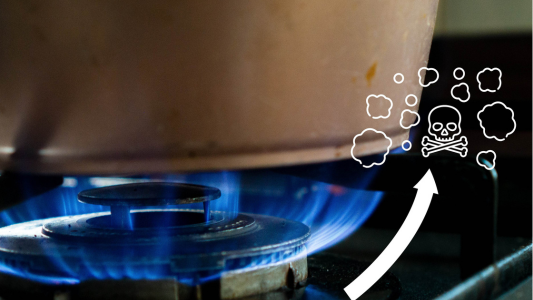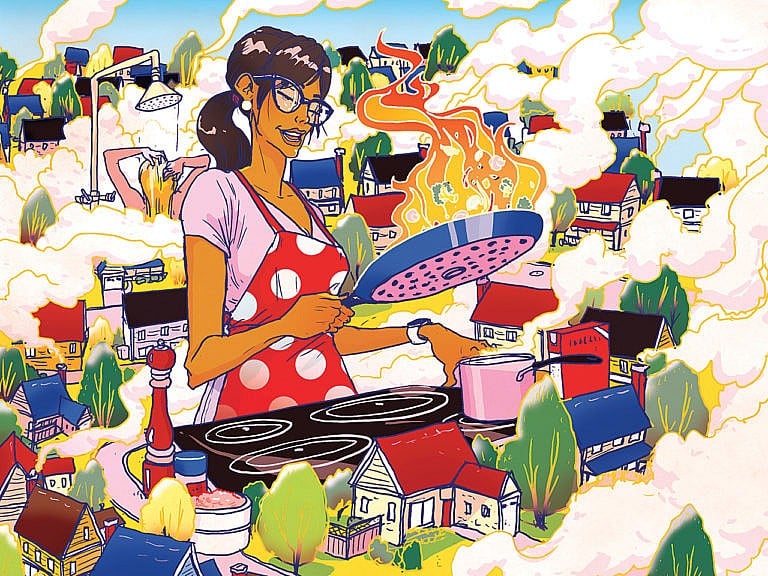
THE RISKS
Home should be a place where your family can breathe easy and enjoy meals without safety worries. But your gas stove, furnace, fireplace or water heater could be adding risks to your family’s health.
Kids in homes with gas stoves are 42% more likely to develop asthma. Yet half of people in Canada are not aware of these potential dangers lurking in their homes.
Gas stoves pose a risk to lung health
Research indicates that the health risks associated with using a gas stove are comparable to second-hand smoke in your home.
Gas stoves release a mix of harmful chemicals like carbon monoxide, nitrogen dioxide (NO₂), formaldehyde, and benzene, which have been linked to serious health issues including asthma and other respiratory diseases and cancer. Even short-term exposure can lead to symptoms like coughing, wheezing, and eye, nose and throat irritation.
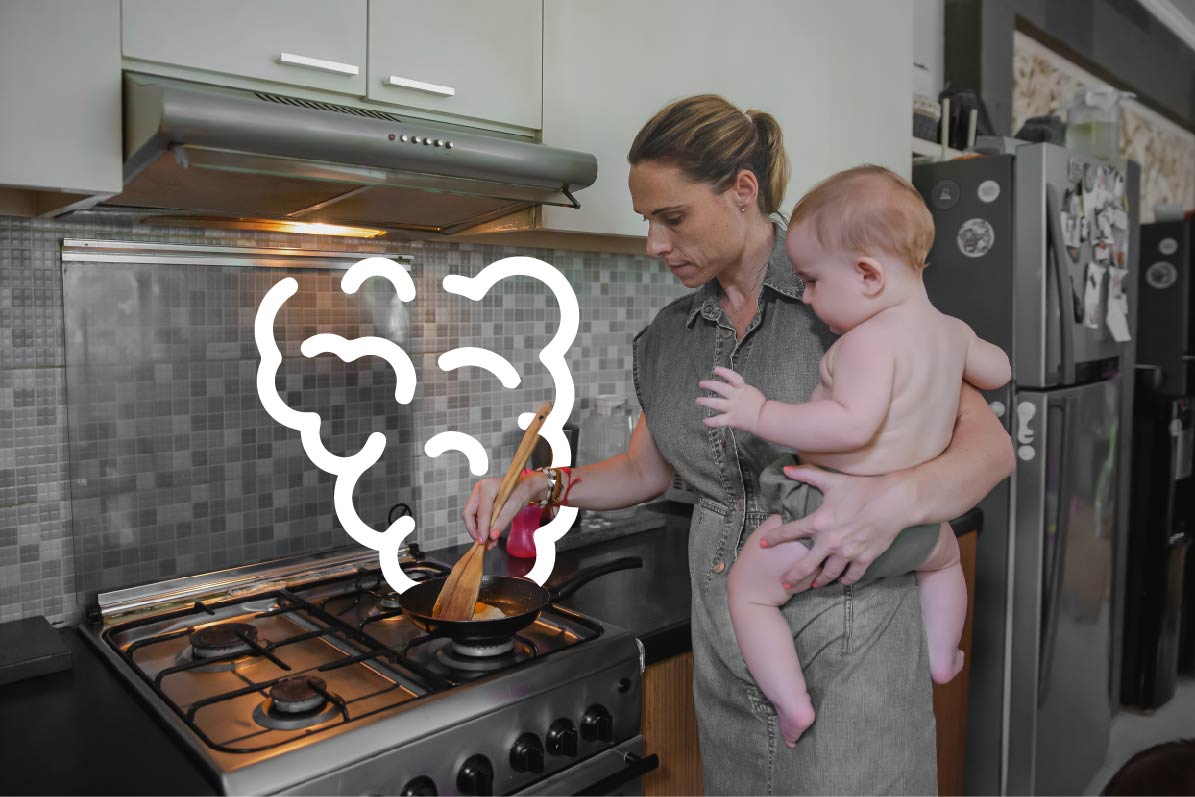
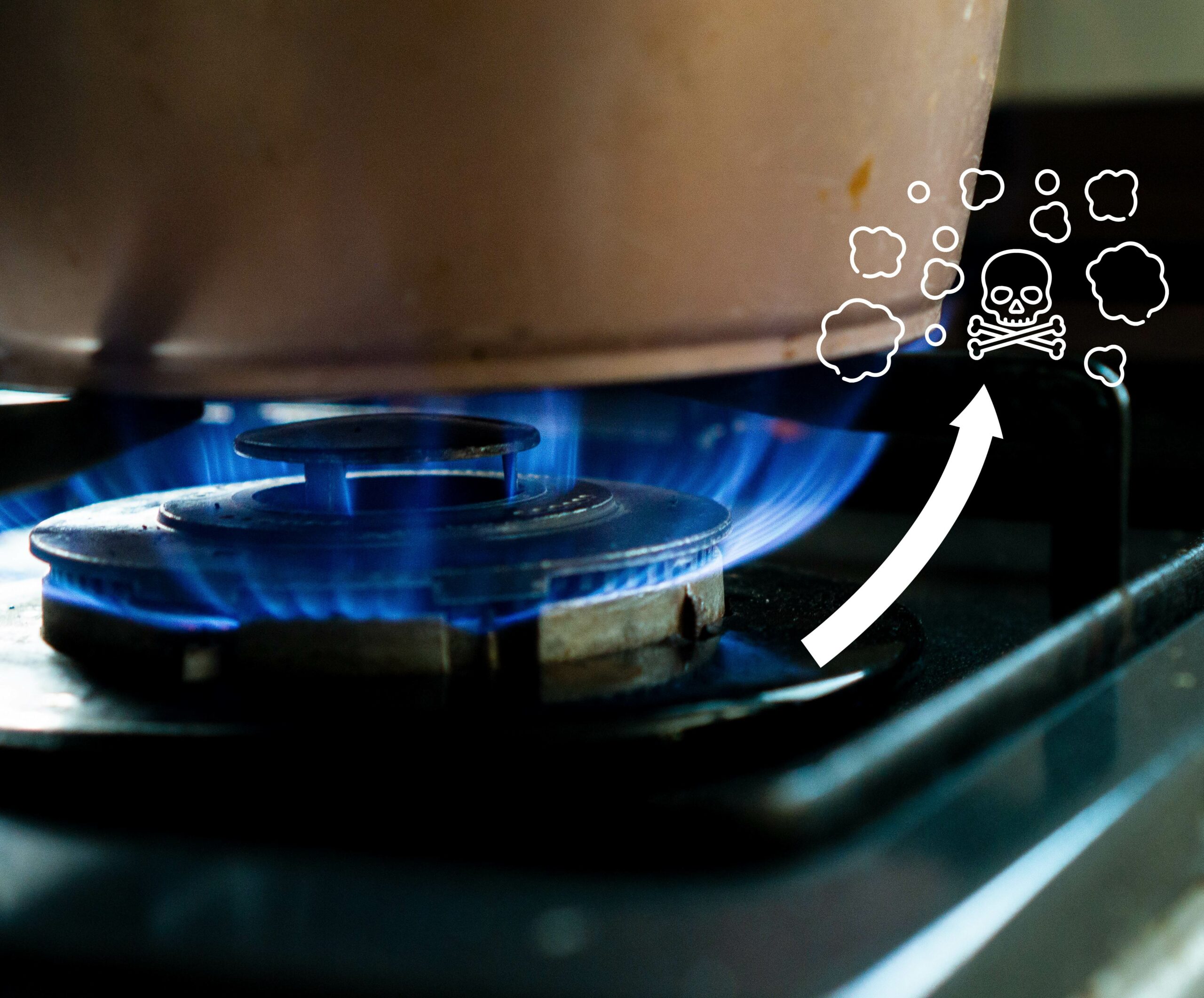
Off doesn’t mean safe
After turning off your stove, the nitrogen oxides that were released during cooking can linger in your home for hours. Gas stoves can even release harmful chemicals when they are switched off.
These substances can accumulate to levels that surpass Health Canada’s guidelines for indoor air quality, creating an unseen but potentially harmful environment for your family.
The impact of gas furnaces beyond your front door
Have you ever wondered where the vents from gas furnaces lead to? Well-ventilated gas furnaces release pollutants into our yards and neighbourhoods, increasing local air pollution and contributing to a rise in asthma, cardiovascular diseases, and more.
Outdoor air pollution is a mix of many substances, including NO₂. Buildings, including houses and apartments, contribute nearly 19% of the total NO₂ found in air pollution, and that’s largely due to natural gas usage.
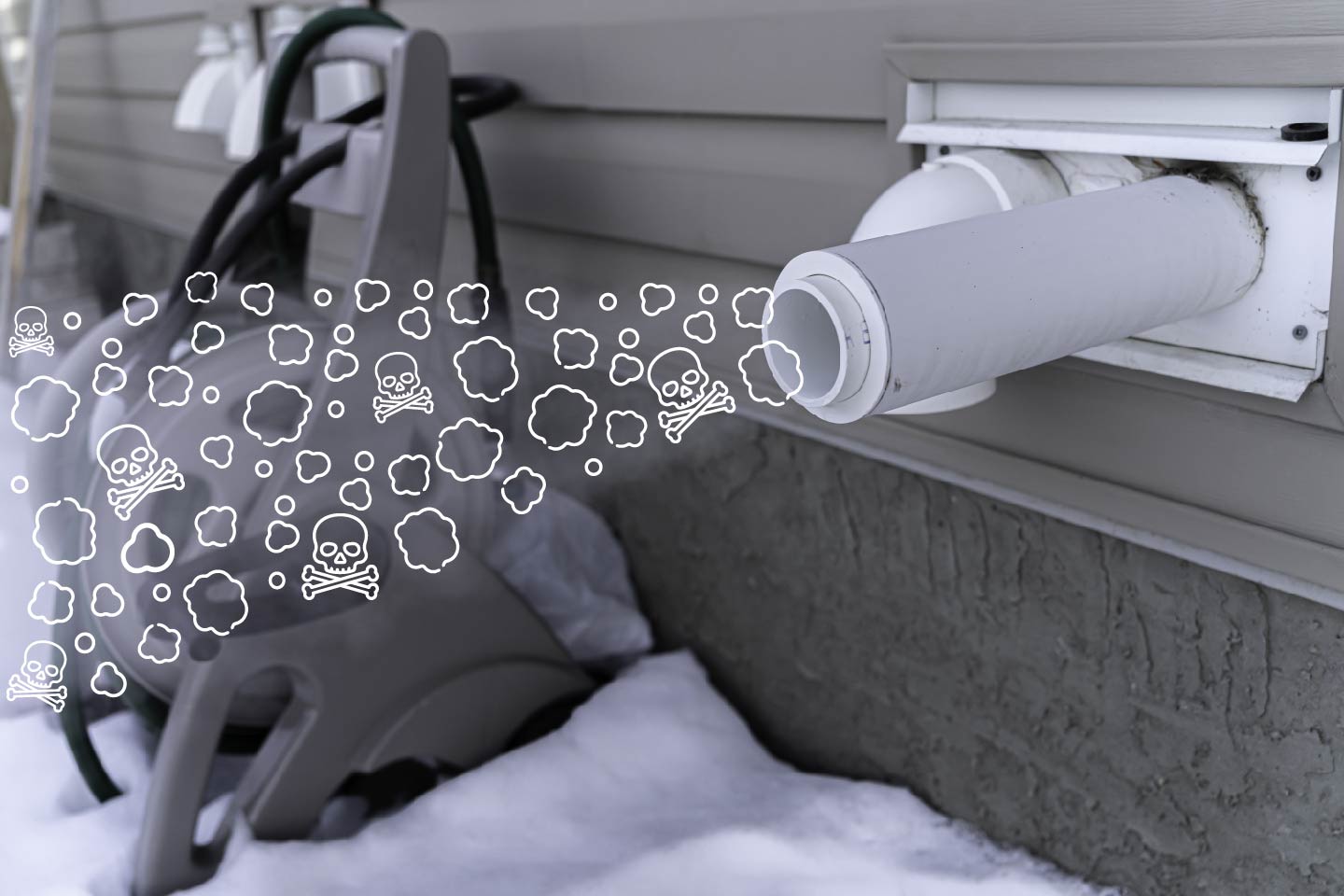
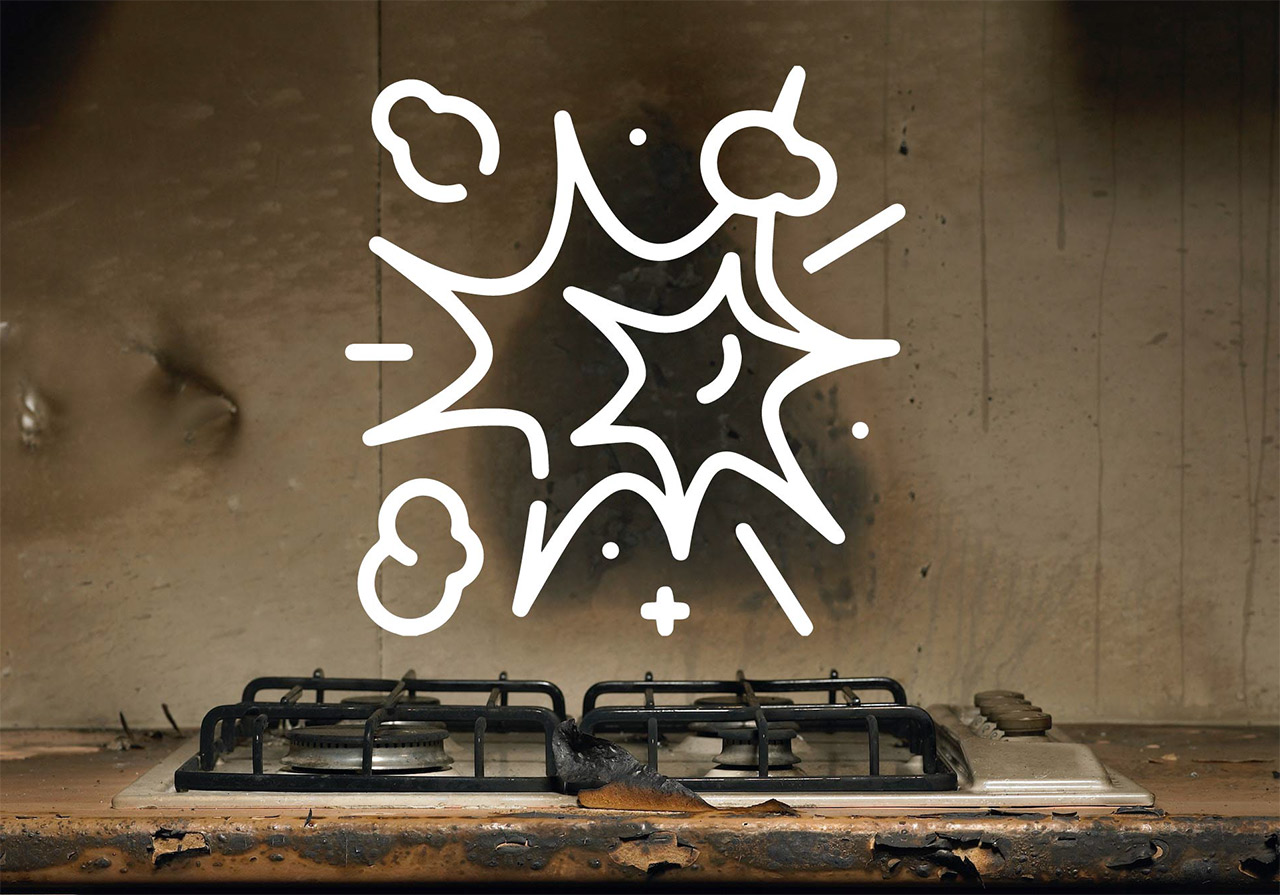
Time to re-evaluate gas safety
Lives are lost every year due to carbon monoxide poisoning. Hundreds of other people feel other symptoms like dizziness, confusion and weakness.
A majority of this poisoning happens at home, with gas appliances of all kinds as a major risk factor. Even minor leaks can require evacuation, wasting time and adding unnecessary stress.
It’s high time we ask ourselves: why do we continue to tolerate such risks around our families?

Research indicates that the health risks associated with using a gas stove are comparable to second-hand smoke in your home.
Gas stoves release a mix of harmful chemicals like carbon monoxide, nitrogen dioxide (NO₂), formaldehyde, and benzene, which have been linked to serious health issues including asthma and other respiratory diseases and cancer. Even short-term exposure can lead to symptoms like coughing, wheezing, and eye, nose and throat irritation.

After turning off your stove, the nitrogen oxides that were released during cooking can linger in your home for hours. Gas stoves can even release harmful chemicals when they are switched off.
These substances can accumulate to levels that surpass Health Canada’s guidelines for indoor air quality, creating an unseen but potentially harmful environment for your family.
your family.

Have you ever wondered where the vents from gas furnaces lead to? Well-ventilated gas furnaces release pollutants into our yards and neighbourhoods, increasing local air pollution and contributing to a rise in asthma, cardiovascular diseases, and more.
Outdoor air pollution is a mix of many substances, including NO₂. Buildings, including houses and apartments, contribute nearly 19% of the total NO₂ found in air pollution, and that’s largely due to natural gas usage.
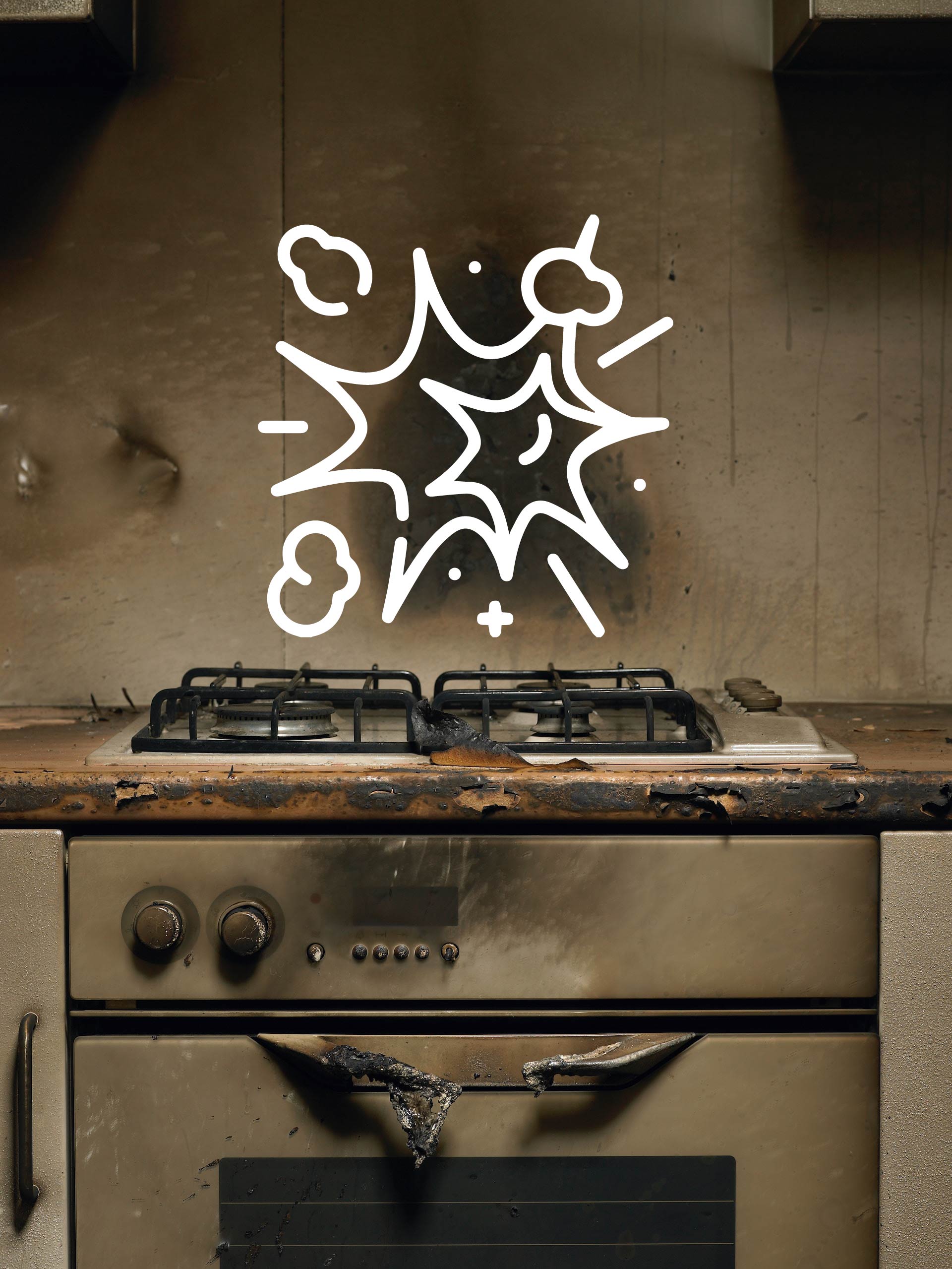
Nearly 300 lives are lost in Canada annually due to carbon monoxide poisoning. Hundreds of other people feel other symptoms like dizziness, confusion and weakness.
A majority of this poisoning happens at home, with gas appliances of all kinds as a major risk factor. Even minor leaks can require evacuation, wasting time and adding unnecessary stress.
It’s high time we ask ourselves: why do we continue to tolerate such risks around our families?
HEALTHY SOLUTIONS
Your home can be a place where you can heat, cook and breathe easy. There are home heating and cooking solutions that do not compromise your family’s well-being.
Gas companies advise users to adopt precautionary measures such as running fans or using only the back burners. But you shouldn’t have to keep a checklist of safety measures every time you use an appliance meant to bring comfort and ease into your life.
Heat pumps: healthy heating and cooling
Heat pumps are an efficient alternative to gas furnaces, and they double as air conditioners during sweltering Canadian summers.
They are not only cost-effective, but actually generally cheaper than running gas and air conditioning. Switching to a heat pump can be a game-changer, especially for older houses.
Plus, a study found they are much more efficient than gas furnaces in cold temperatures. Imagine a home that stays toasty in winter and cool in summer, while saving money and reducing pollution.
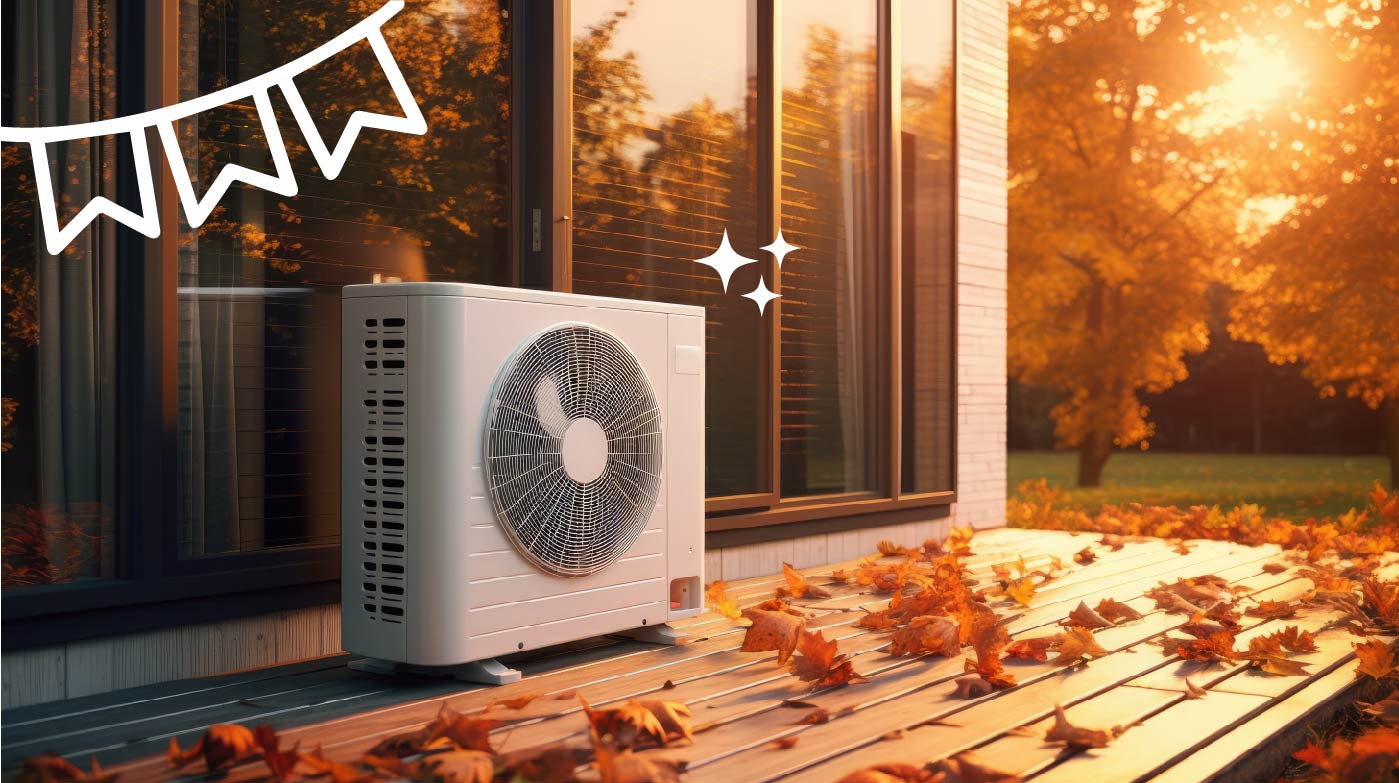

Amp up your cooking game
Modern electric stoves are safe, easy to maintain and reliably consistent.
Induction cooking, which is popular in Europe and Japan, is a more efficient option. It keeps the stovetop cooler to the touch by using quick and efficient heating technology, which is better when little hands are around.
Tips to breathe a little easier
Can’t take on a reno right now? There are some methods to reduce – though not eliminate – the risks from gas appliances.
A portable induction cooktop can be an affordable, accessible option for when just one burner is needed. Opening kitchen windows can somewhat reduce health risks. And finally, ensure you have working CO and NO₂ alarms, and that your gas appliances are inspected regularly.


Heat pumps are an efficient alternative to gas furnaces, and they double as air conditioners during sweltering Canadian summers.
They are not only cost-effective, but actually generally cheaper than running gas and air conditioning. Switching to a heat pump can be a game-changer, especially for older houses.
Plus, a study found they are much more efficient than gas furnaces in cold temperatures. Imagine a home that stays toasty in winter and cool in summer, while saving money and reducing pollution.

Modern electric stoves are safe, easy to maintain and reliably consistent.
Induction cooking, which is popular in Europe and Japan, is a more efficient option. It keeps the stovetop cooler to the touch by using quick and efficient heating technology, which is better when little hands are around.
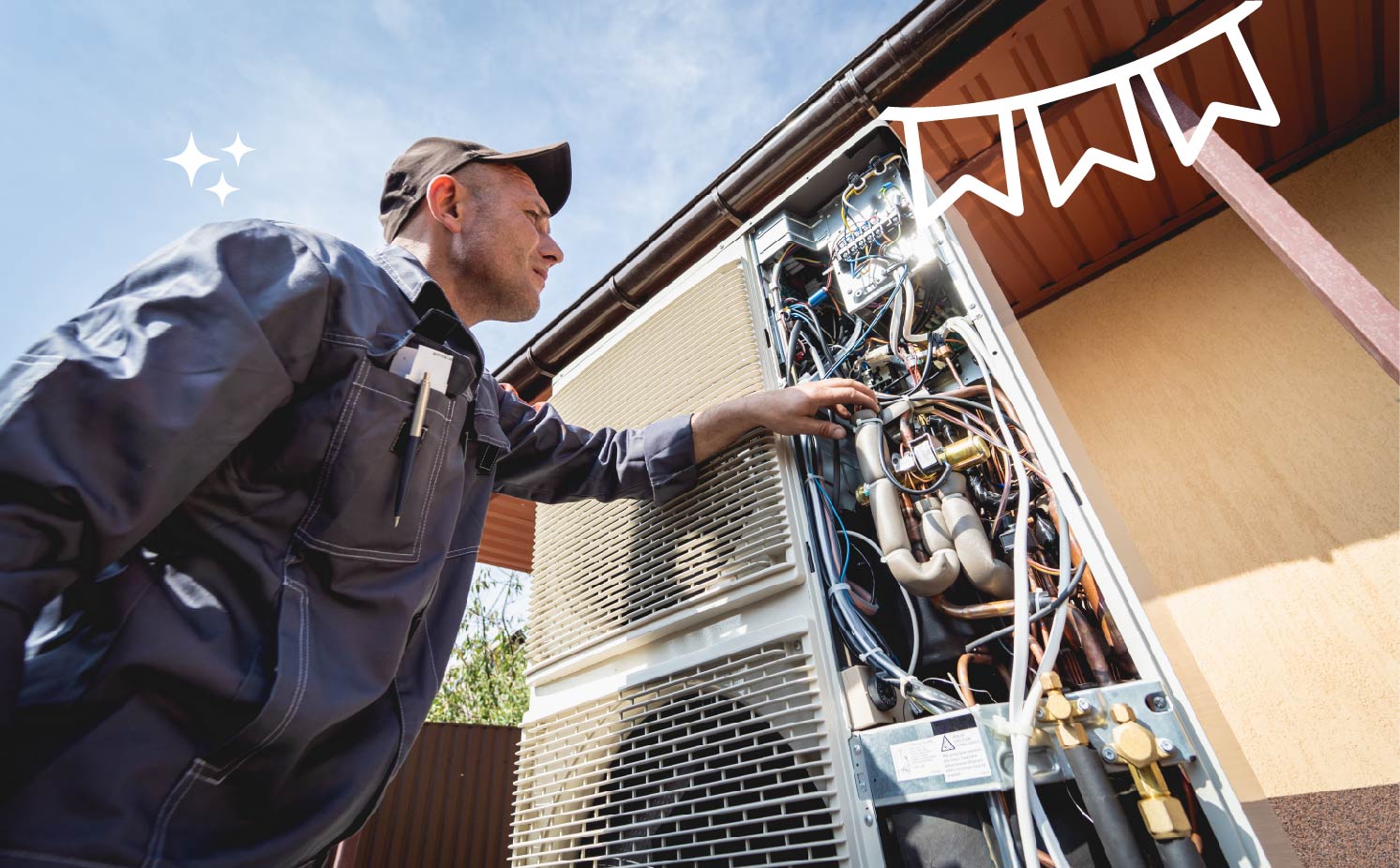
Can’t take on a reno right now? There are some methods to reduce – though not eliminate – the risks from gas appliances.
Buying a portable induction cooktop can be an affordable, accessible option for when just one burner is needed. Opening kitchen windows can somewhat reduce health risks. And finally, ensure you have working CO and NO₂ alarms, and that your gas appliances are inspected regularly.
IN YOUR COMMUNITY
Interested in learning more about a healthier, gas-free home?
Regions across Canada have initiatives to encourage residents to transition to energy-efficient appliances.
Nova Scotia, PEI, New Brunswick, Newfoundland and Labrador
The Atlantic provinces are trailblazers in adopting heat pump technology. Over 20% of homes in Nova Scotia are reaping the benefits of this efficient alternative, and the rest of the region is catching up.
Programs to help make your home healthier and more efficient can be found in Nova Scotia (two programs), New Brunswick, PEI (you might even qualify for a free heat pump) and Newfoundland and Labrador.
Quebec
Quebec makes opting for heat pumps or electric cooking beneficial for both families and the environment. The province is offering a program encouraging heat pump installation as well as other appliance upgrades.
Ontario
Cities across Ontario are offering grants and loans for home upgrades, like heat pumps and energy efficiency enhancements.
There are programs in:
And check your city’s website
Manitoba, Saskatchewan and Alberta
There’s a variety of ways to get healthier appliances in the Prairies. There are municipal programs in Calgary, Saskatoon, Regina, as well as Manitoba’s provincial program.
British Columbia
BC has rolled out a program offering subsidies for various home upgrades, including transitioning to heat pumps. And don’t forget to check with your city for more details.
Nunavut, the Northwest Territories and the Yukon
Residents of the Yukon, Northwest Territories and Nunavut can benefit from a variety of programs to help increase the health and energy efficiency of your home.
Canada
Wherever you are in Canada, there are federal programs. that can help you get off gas and have a healthier home.
Programs include:

